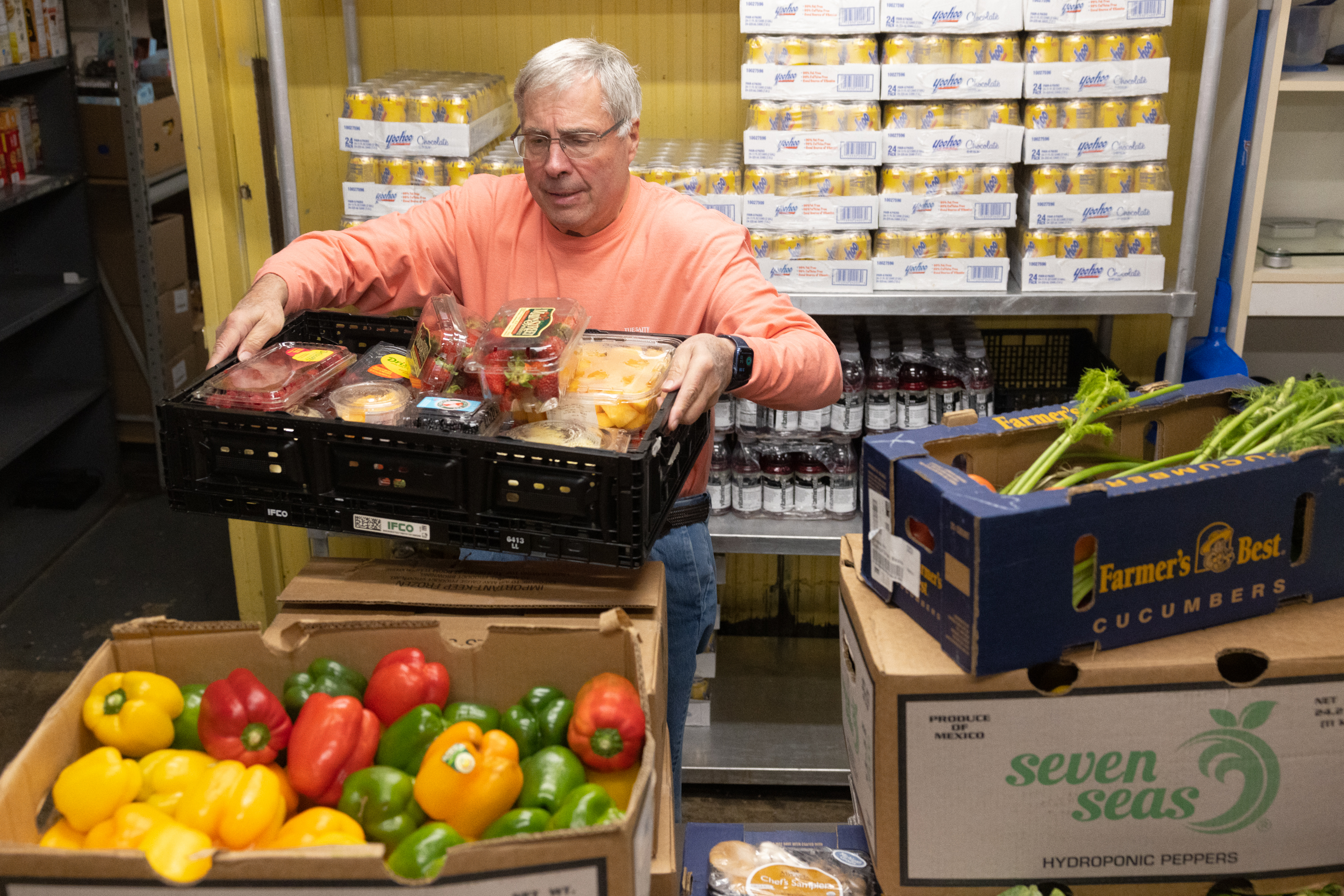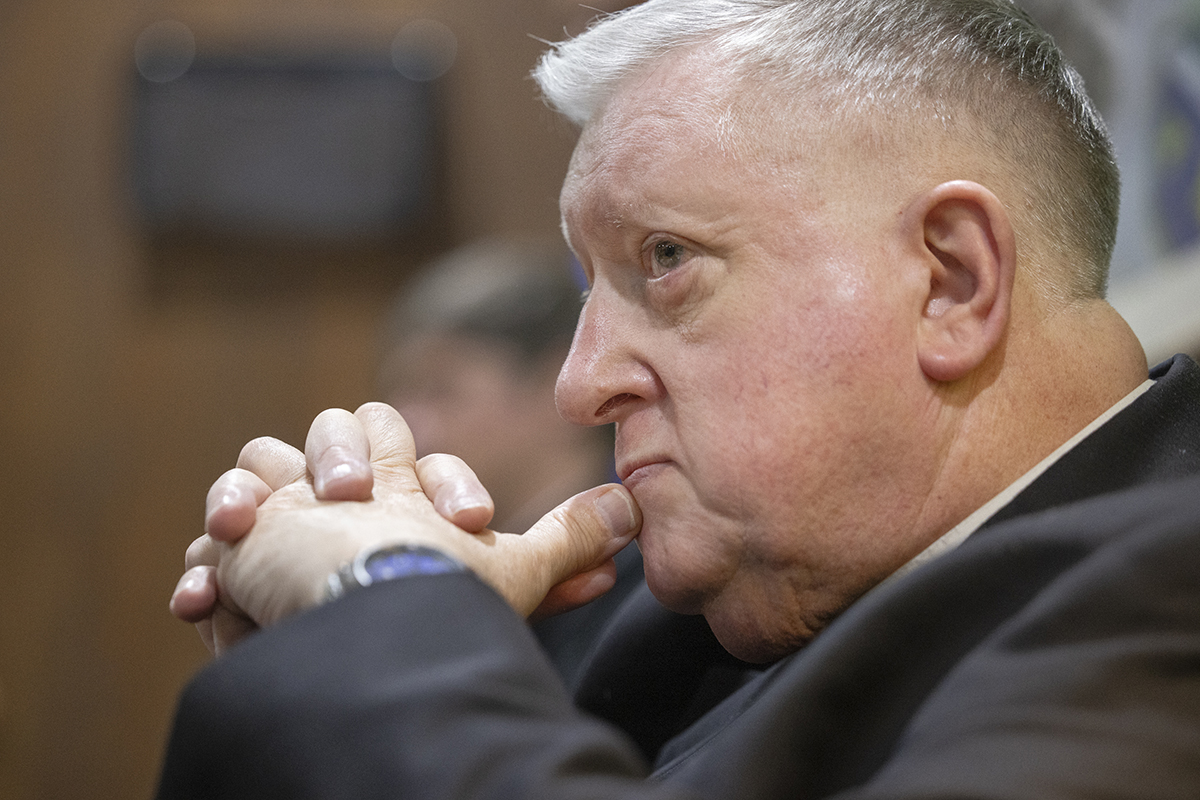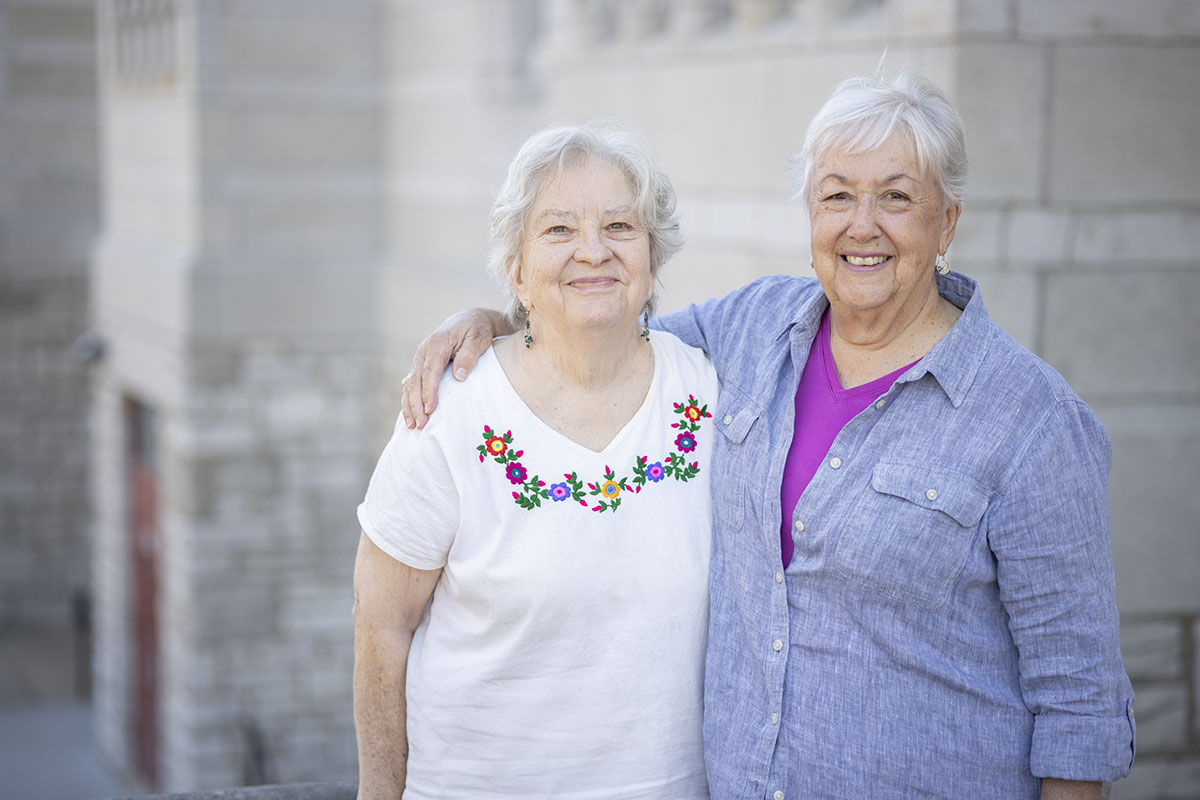The process of discerning a priestly vocation takes time, relationships, seminarians say
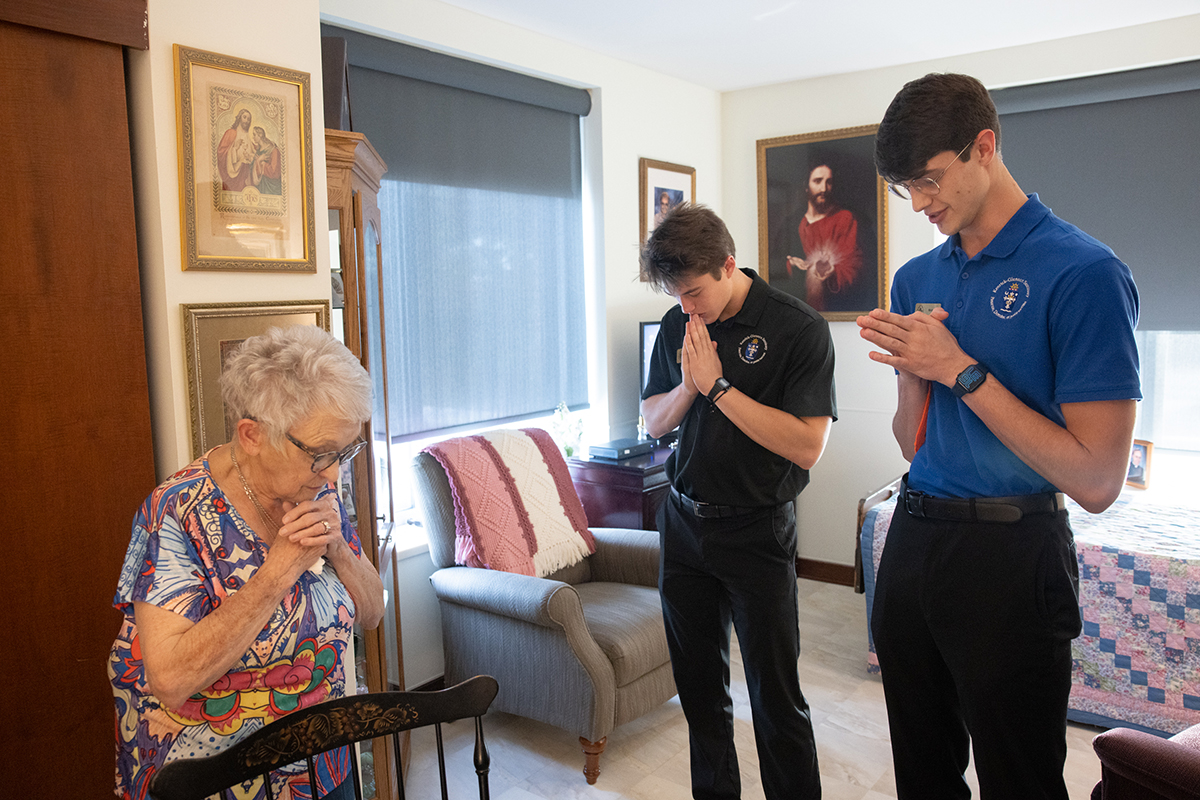
The process of discerning a priestly vocation takes time, relationships, seminarians say
Michael McKinnis is familiar with the ebb and flow of discerning a vocation to the priesthood. He saw good examples of priests at St. Francis of Assisi in Oakville, where he attended grade school, and he sees that’s where a seed might have been planted.
Through his teen years, he had a pretty basic experience of faith: He went to public high school and attended Mass on Sundays, but there wasn’t much beyond that. McKinnis, now 21, went on to college, tucking away thoughts of becoming a priest.
In 2023, Father Donald Morris (previously a seminarian at St. Francis of Assisi) invited him to attend World Youth Day in Lisbon, Portugal. “I thought, it’s gonna be a fun vacation, but when I get there, I’m just blown away by the sheer amount of Catholics there and the true universality of the Church,” McKinnis said. He attended the closing Mass with Pope Francis and 1.5 million worn-out but enthusiastic young people; moved by the experience, he went to confession later that evening, where he gave everything over to the Lord.
The experience was “something that really changed everything for me,” he said.
Things shifted and he found himself attending daily Masses and Holy Hours and spending more time in prayer. Others began to notice, too, including Father Morris, who encouraged him to explore a vocation. McKinnis later attended a Come and See retreat at Kenrick-Glennon Seminary, where then-vocations director Father Brian Fallon asked if he had considered applying to the seminary. McKinnis also sought out spiritual direction from Father George Staley, associate pastor at St. Francis at the time, who walked with McKinnis in his discernment.
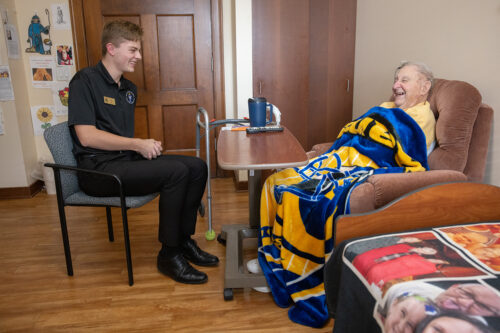
All of them played a role in supporting McKinnis, now a freshman “Propaedeutic I” seminarian at Cardinal Glennon College, as he answered an important question: Is God calling me to the priesthood?
Listening to God’s call in relationship
Kenrick-Glennon Seminary’s primary mission is to guide men through formation as they listen to God’s call for their lives. To accomplish that, the process of accompanying young men considering the priesthood takes time and must be done through relationships, president-rector Father Paul Hoesing said.
Once a candidate is at the point of talking to his pastor or vocation director, he’s saying, “I don’t want to do this alone anymore,” Father Hoesing said. “Because the vocation can’t be discerned alone, just like marriage can’t be discerned alone. It’s discerned with a set of relationships.”
In previous generations, men applied directly to the seminary, often right out of high school, with some attending high school seminary. Today’s applicants represent a wider diversity of personal gifts and levels of maturity, ranging in age from the high school graduate to those who have completed post-secondary degrees and have even started careers.
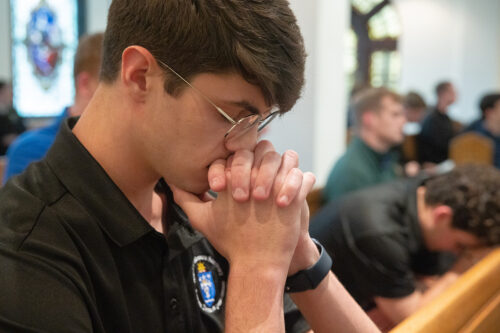
“Priestly formation must appreciate cultural, generational, educational and familial differences and be able to recognize which are gifts, which are liabilities, and which are simply indications of a need for further growth,” according to the most recent edition of the U.S. bishops’ “Program for Priestly Formation,” which offers guidelines for seminary formation.
“We cast a wide net, and then help them discern — do they feel called and do we see them as a good fit?” Cardinal Glennon College vice-rector Father Jason Schumer said. “It’s a process of accompaniment, and we help them to see this is how you pray about it.”
Candidates no longer apply directly to the seminary. Instead, they generally start with their pastor or speak directly with the vocations director, who is the primary point of contact for the application process. Once an invitation to apply is extended, the candidate takes several other steps, including a behavioral assessment, psychological evaluation and writing a personal history, a process that takes several months to complete.
In his senior year at Saint Louis Priory School, Andrew Frei, 18, contacted vocations director Father Tony Ritter when he became serious about pursuing the priesthood. Over the course of several months, the two met to talk about everything from his vocation story to the application process.
“He was very much, ‘whatever you need, I want to help with,’” said Frei, a freshman “Propaedeutic I” seminarian at Cardinal Glennon College. He also knew a few men from Priory and the youth group at St. Anselm who already were in the seminary and had conversations with them, too.
“I went to them for, ‘Hey, what does this day-to-day look like?’ And then Father Ritter was very much more, ‘How do I actually discern if this is what I want to do?’”
Father Ritter said his role is to get to know a man better before a seminary application is offered. He asks several questions: How is your prayer life and relationship with God? What has the Lord been saying to you, and how is He inviting you to this vocation? And what is your understanding of the priesthood, and are you free to live this life?
“We’re trying to be very intentional about the quality of the candidates who are entering, and I think the Church has raised that bar a little more in the last 20 years,” he said. The process isn’t meant to be intimidating — the seminary is not asking for perfection — but “how can we best prepare you for this life if (he’s) called to it, and build him up? I want to set up parishes and these young guys for success.”
Supportive community
Having the support of a Catholic community is what helped Weston Kenney discern God’s calling to the priesthood. Kenney, 29, was raised Catholic but wavered in his faith in college. But there were little moments in which he started to reconnect with God.
After a summer photojournalism internship at the St. Louis Review, he headed back to Western Kentucky University, where he became acquainted with the Fellowship of Catholic University Students (FOCUS) and served as a missionary for two years. There also were other small moments in which he found God speaking to him in adoration and prayer.
“It was during that time when Jesus was just kind of saying, ‘Do you love me?’” he said. “Being around this Catholic environment … and I’m seeing the Lord’s hand, even though maybe I wasn’t necessarily looking for Him.”
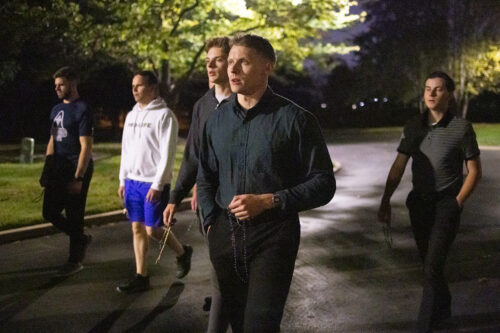
After college, Kenney taught in Catholic schools and continued to feel a pull toward God. But now, it was shifting toward the priesthood. Was this where God was asking him to be?
“I feel like the Lord placed something on my heart and it just didn’t go away,” he said. Kenney spoke to his spiritual director and then reached out to the archdiocese’s vocations director at the time, Father Fallon, about the next steps. Now in the seminary as a first-year pre-theology “Propaedeutic I” student, he finds support from his fellow seminarians and faculty as he continues to discern.
He paraphrased a quote from St. John Paul II, who said that, “you cannot live without love. You remain a being that is incomprehensible for yourself. Your life is senseless if love is not revealed to you, if you do not encounter love, if you do not experience it and make it your own, if you do not participate intimately in it.”
“And I’ll say that is what formation does — it’s trying to learn and help us to see how we can experience (love) and make it our own,” Kenney said.
>> Kenrick-Glennon seminarians by the numbers
• Total number of seminarians: 112 from 22 dioceses, including the Archdiocese of St. Louis (two are Benedictine monks)
• Total number of St. Louis seminarians: 35 (one attends St. John XXIII Seminary in Weston, Massachusetts)
• Total number of seminarians from outside of the Archdiocese of St. Louis: 76
>> New terminology for seminary formation
The U.S. bishops, working with the Vatican’s Dicastery for the Clergy, announced in 2022 a new stucture for the stages of seminary formation, shifting away from academic terminology and moving into four primary stages of formation: propaedeutic, discipleship, configuration and vocational synthesis.
The shift in language is part of the Program of Priestly Formation 6th edition, which was promulgated in June 2022 by the U.S. Conference of Catholic Bishops, with seminaries implementing the changes in the last few years. Kenrick-Glennon Seminary shifted to the new structure last year.
The most significant change is the propaedeutic stage, wihch is similar to a novitiate in a religious order’s formation. Latin for “preparation,” the propaedeutic stage is a time of intentional spiritual discernment. Seminarians also participate in a technology “fast” (phones, tablets, computers or other electronic devices are eliminated for most of the week) to give them the freedom to enter more deliberately into relationships with God and other people and grow in their vocational calling.
>> Come and See
Come and See retreats are for high school teens to learn what seminary life is like. The next one will take place Nov. 15-17 at Kenrick-Glennon Seminary. Retreatants will experience seminary life, hear talks from seminary formators, pray with the college seminarians and be a part of the seminary fraternity. To register, visit www.stlvocations.org/retreat. For more information, email Renae Novak at Rnovak@archstl.org or Father Tony Ritter at anthonyritter@archstl.org.
>> Discernment of a vocation
The art of invitation is key in helping people discern their life’s vocation. Every person has a vocation, something specific that God calls us to. Vocations may include priesthood, consecrated religious life, marriage and single life.
• Start with conversation: Think of someone with whom you have a good relationship, perhaps a friend or relative. Listen to what they have to say about their relationship with the Lord. Can they articulate what God is doing in their life? Offer a compliment, such as, “This is how I see the Lord working through you.” Then a question: “Have you considered how He might be calling you?”
• Do not be afraid: Thinking about that person with whom you have a relationship, don’t be afraid to be bold and tell them where you think God might be working in their life. It could be something like, “Hey, I think you have these gifts and the Lord might be inviting you. Maybe you should go on that retreat or call the vocation director.”
• Discernment takes time: Spend time with God every day in prayer. Share your heart with Him. Learn that it’s OK to spend some of that time in silence. You will notice ways God is trying to love you. You don’t have to have a vocation figured out all at once. Every vocation takes time for proper discernment.
• Discerning vocations = evangelization: Vocation discernment should be in lock step with evangelization. When we have an encounter with the Lord, we can’t help but share that with others. If we love the Lord, then we want to help others see how the Lord is calling them to share His love with others.
Watch a video of Kenrick-Glennon seminarians describe how they are discerning a vocation to the priesthood:
Subscribe to Read All St. Louis Review Stories
All readers receive 5 stories to read free per month. After that, readers will need to be logged in.
If you are currently receive the St. Louis Review at your home or office, please send your name and address (and subscriber id if you know it) to subscriptions@stlouisreview.com to get your login information.
If you are not currently a subscriber to the St. Louis Review, please contact subscriptions@stlouisreview.com for information on how to subscribe.

